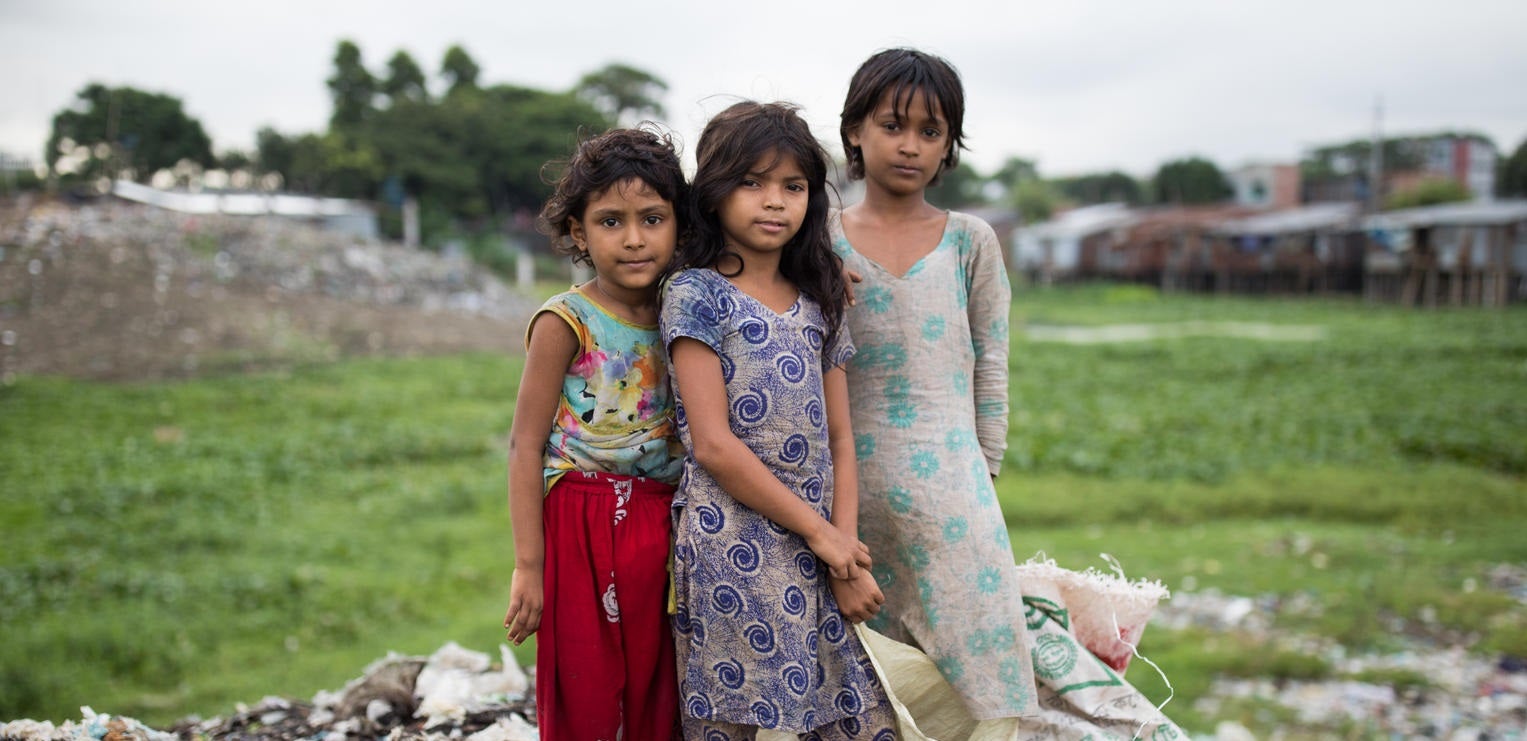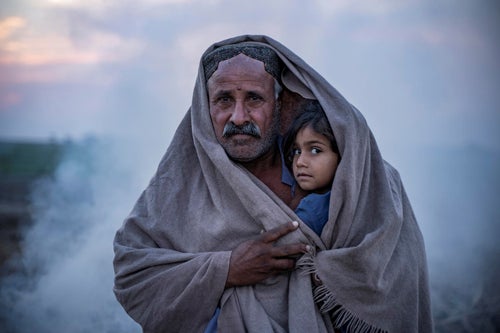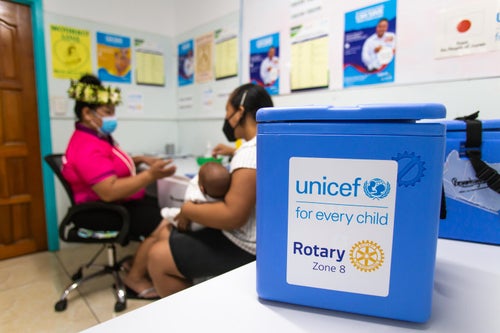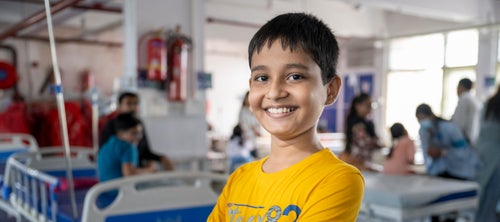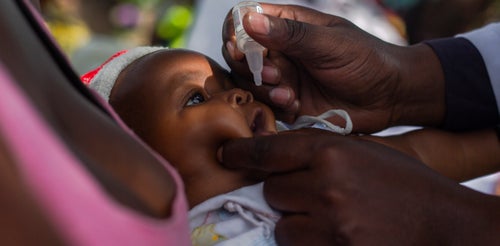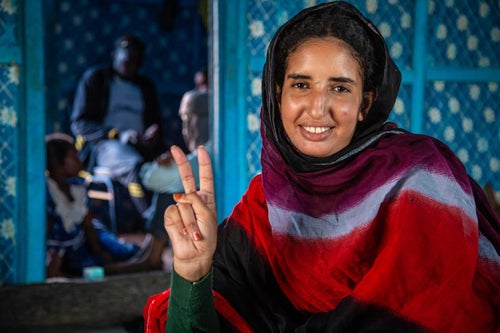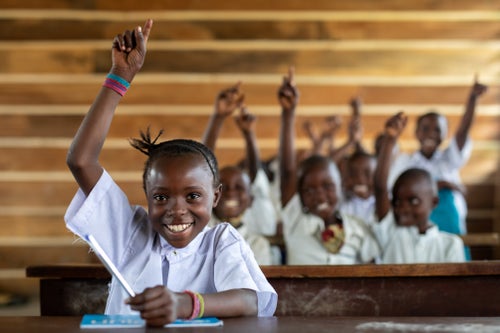The world changes every day, but you’re helping us change with it.
Since UNICEF was founded after World War II, people like you have helped children through some of the greatest challenges in history. You’ve been there for children in floods and droughts, during violence and conflict, and helped us protect them after natural disasters.
Most recently, you’ve helped us keep children safe during a global pandemic. In a world of change and uncertainty, the key to making sure no child falls behind is constant innovation.
With support from people like you, here are five ways innovation is helping UNICEF solve the problems children face today and prepare for the challenges they will face in the future.
1. The school that’s green, from the ground up
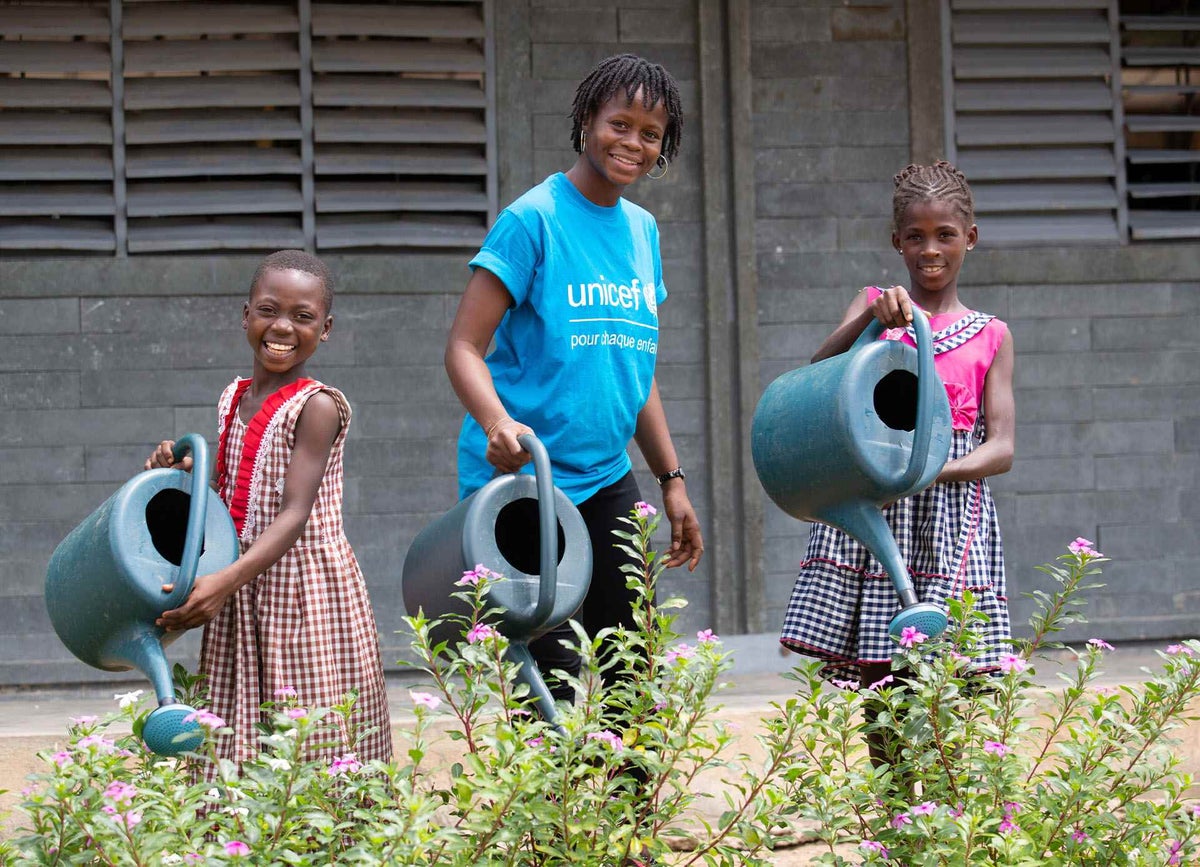
This school in Côte d'Ivoire has some seriously impressive eco-credentials. It was built using bricks made from recycled plastic waste.
The plastic bricks used to build the new school are about a third of the price of regular bricks. They’re also a better insulator, which means the students’ classrooms will stay cool without any air conditioning.
The rubbish bins and handwashing points have been made from recycled materials too. The children have even repurposed old tyres to create raised vegetable beds.
Thanks to you, UNICEF is building hundreds more schools just like it. Because every child has the right to learn in a clean and healthy environment.
2. The solar-powered fridge saving lives
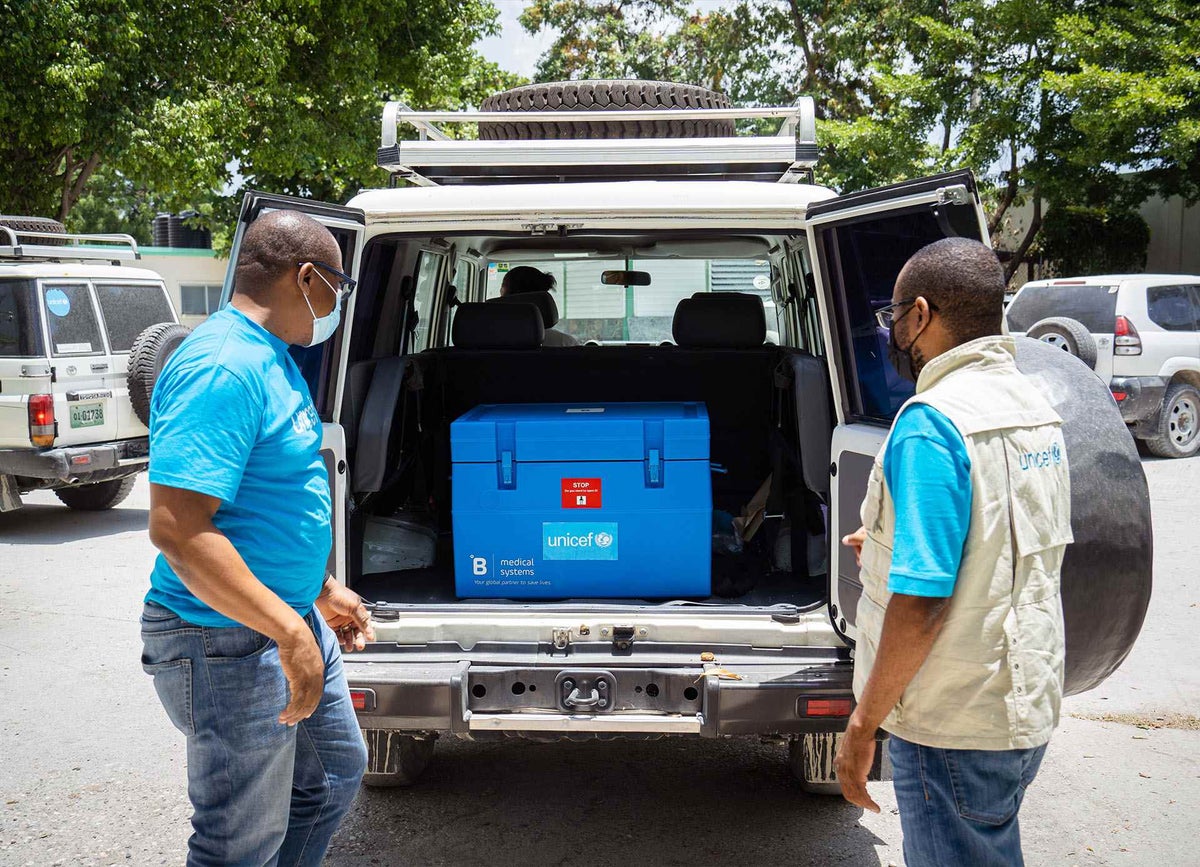
In some situations, only the most advanced technology will do. Like in Haiti, where medical staff need to keep COVID-19 vaccines refrigerated, but only 45 per cent of the country is connected to electricity.
In the first five months of this year, the number of COVID-19 cases and deaths have nearly doubled in Haiti. Vaccination is critical to control the outbreak.
Thanks to you, UNICEF is deploying a revolutionary new generation of solar fridges to solve the problem. These fridges are so efficient and well-designed that they can stay cold for three days even if the sun isn’t shining.
In almost every single health centre of Haiti, our teams have installed solar fridges to keep vaccines at the right temperature – over 900 in total.
This technology is also used to reach children with routine vaccinations, reaching even the most remote parts of the country.
When the pandemic affected global supply chains, your support helped UNICEF to develop new ways to get vaccines to children. Multi-stop charter flights dropped off vaccines where they were most needed and cut delivery costs too.
Here’s a snapshot of the vaccines our teams have been able to deliver thanks to you.
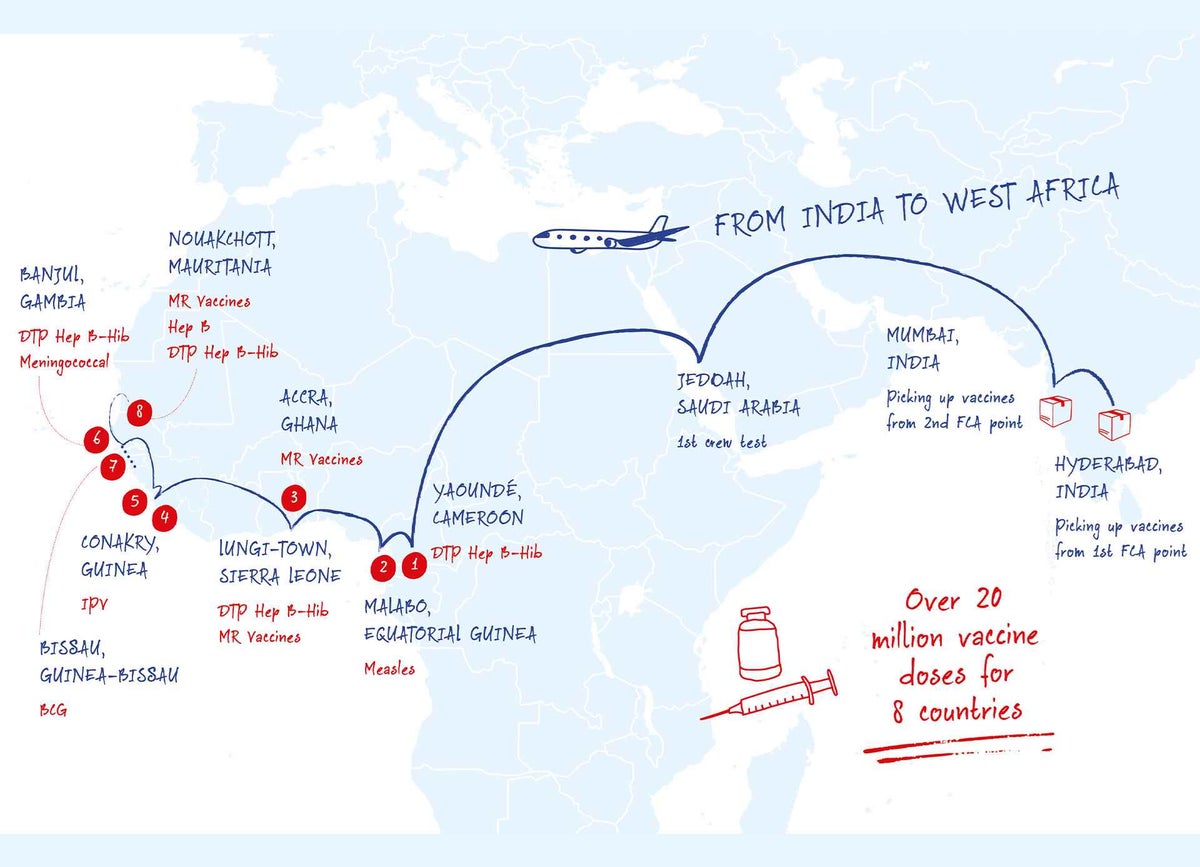
3. Power to the (young) people
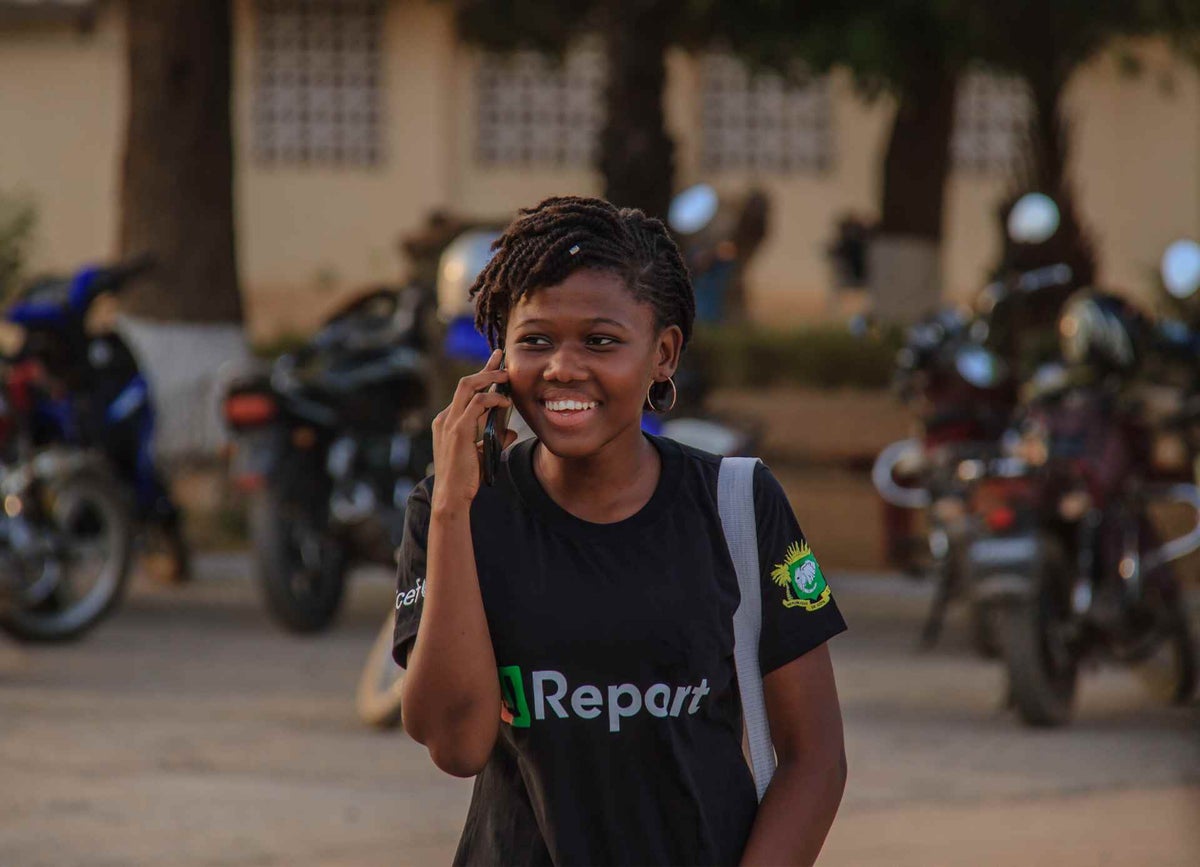
UNICEF has created U-Report – a social platform that gives young people a way to speak out about the things that matter to them most.
By answering polls and writing reports, young people can share their views which are then used to influence policy makers and community leaders.
U-Report is free, anonymous and easy to use. It’s available through the internet or SMS, so it works on a basic mobile phone. It’s also already active in 68 countries and has 11 million world-changing young users.
Like what you see? You can help us innovate for children as a Global Parent
Become a Regular Donor
By signing up with a monthly gift, you’ll join our Global Parents to continue protecting children from exploitation, hunger, disease and inequality wherever the need is greatest.
4. Getting oxygen to children around the world

Pneumonia is the biggest killer of children under five. To survive, they need oxygen – and fast.
But in lower income countries like Senegal, the specialised oxygen equipment needed to save those children’s lives often isn’t available. It’s either too expensive, too complex, or too difficult to transport.
With support from people like you, UNICEF has launched SPRINT (Scaling Pneumonia Response Innovations) – an innovative program that’s delivering life-saving oxygen equipment and training to hospitals in Senegal.
Already, the program has made vital pneumonia treatment available to thousands of families – and the race is on to send SPRINT to other counties too.
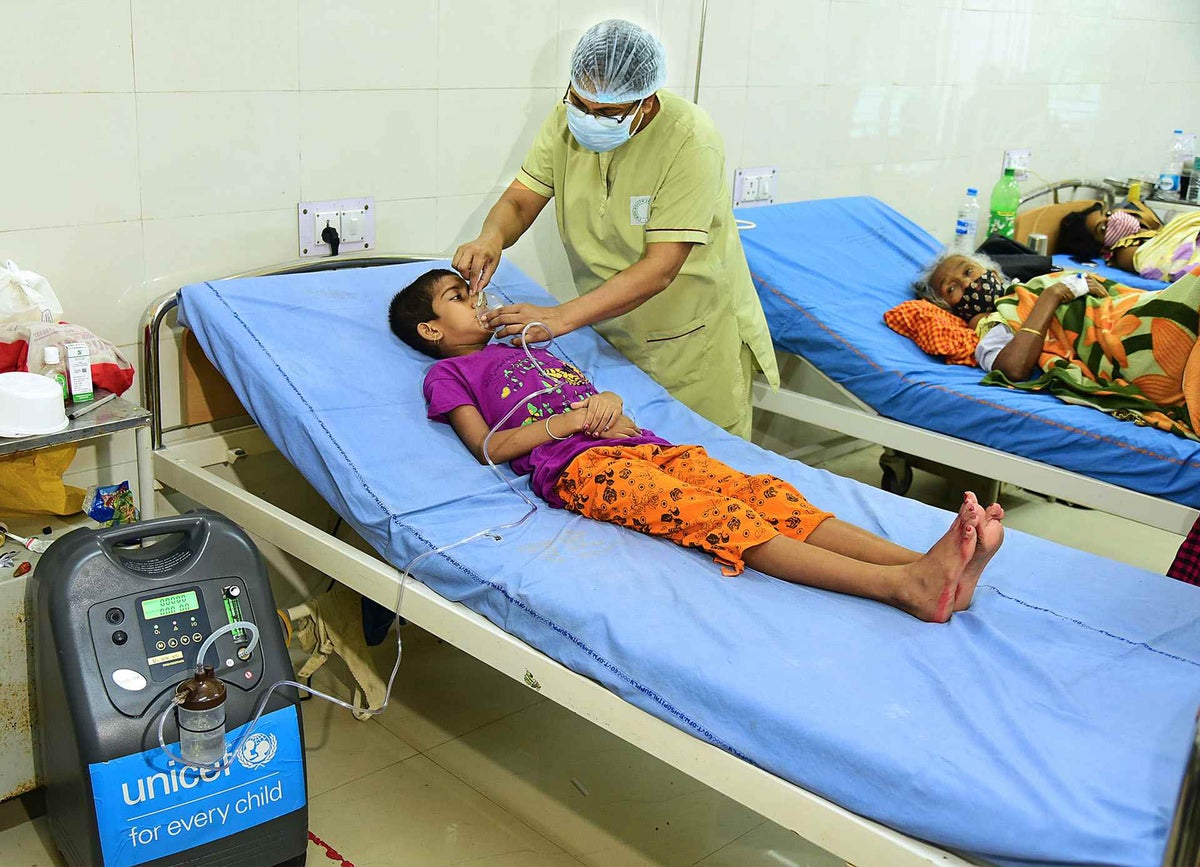
SPRINT is a big picture approach – but it wouldn’t be possible without smaller-scale innovations. The Oxygen Concentrator (pictured above) is about the size of a carry-on suitcase and pulls life-saving oxygen out of the air. It’s portable, simple to use and perfect for remote hospitals where oxygen tanks aren’t available.
5. Not all tents are created equal
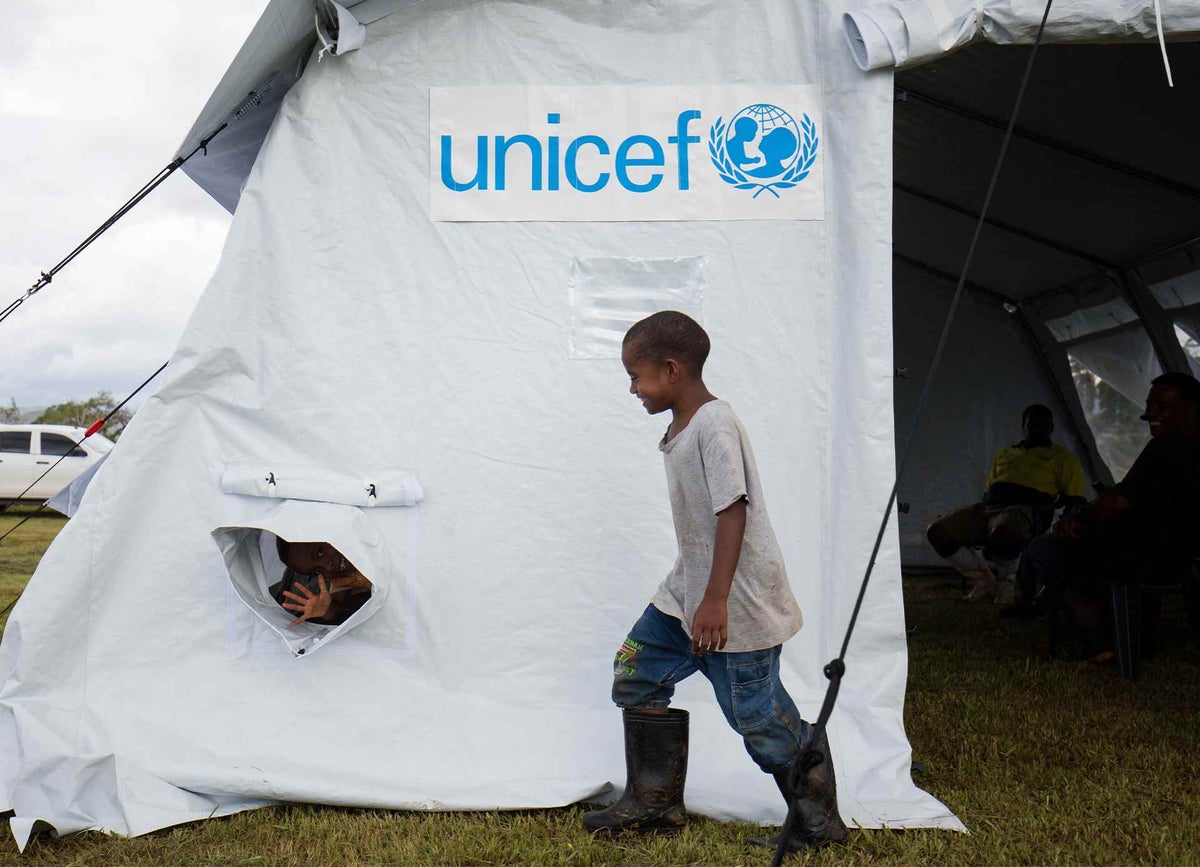
Tents are a staple of emergency response. Wherever children are forced from their homes by conflict or a natural disaster, UNICEF’s white tents are a safe haven.
For years, UNICEF’s tents have been the gold standard. People like you have helped make them even better. With your support, our teams worked with manufacturers to redesign them. They’re now stronger, lighter and more comfortable than ever before.
The prototype had to pass exhaustive tests. It started in labs – with wind tunnels and rain machines. Then they were sent to UNICEF teams all over the world.
In Uganda, they were tested for extreme heat. In the Philippines, for humidity. They were even sent to some of the coldest places on earth, to make sure they stayed cosy.
The outcome? A better experience for children. Whether they’re used as a school, a health clinic or a temporary home, the redesigned tents will help keep children safe in emergencies. They even have some innovative extras like solar kits and electricity points.
Thank you for helping us transform the world for children. Generous donations from people like you mean UNICEF can aim higher, be bolder and innovate at scale.
You help us invest in new technology, develop smarter systems and find ever-better solutions. Thank you for helping drive the innovations that are changing – and saving – young lives. And for creating a better world for children.
Become a Global Parent today to help make even more innovations like these a reality for children around the world.
Related articles
Stay up-to-date on UNICEF's work in Australia and around the world


